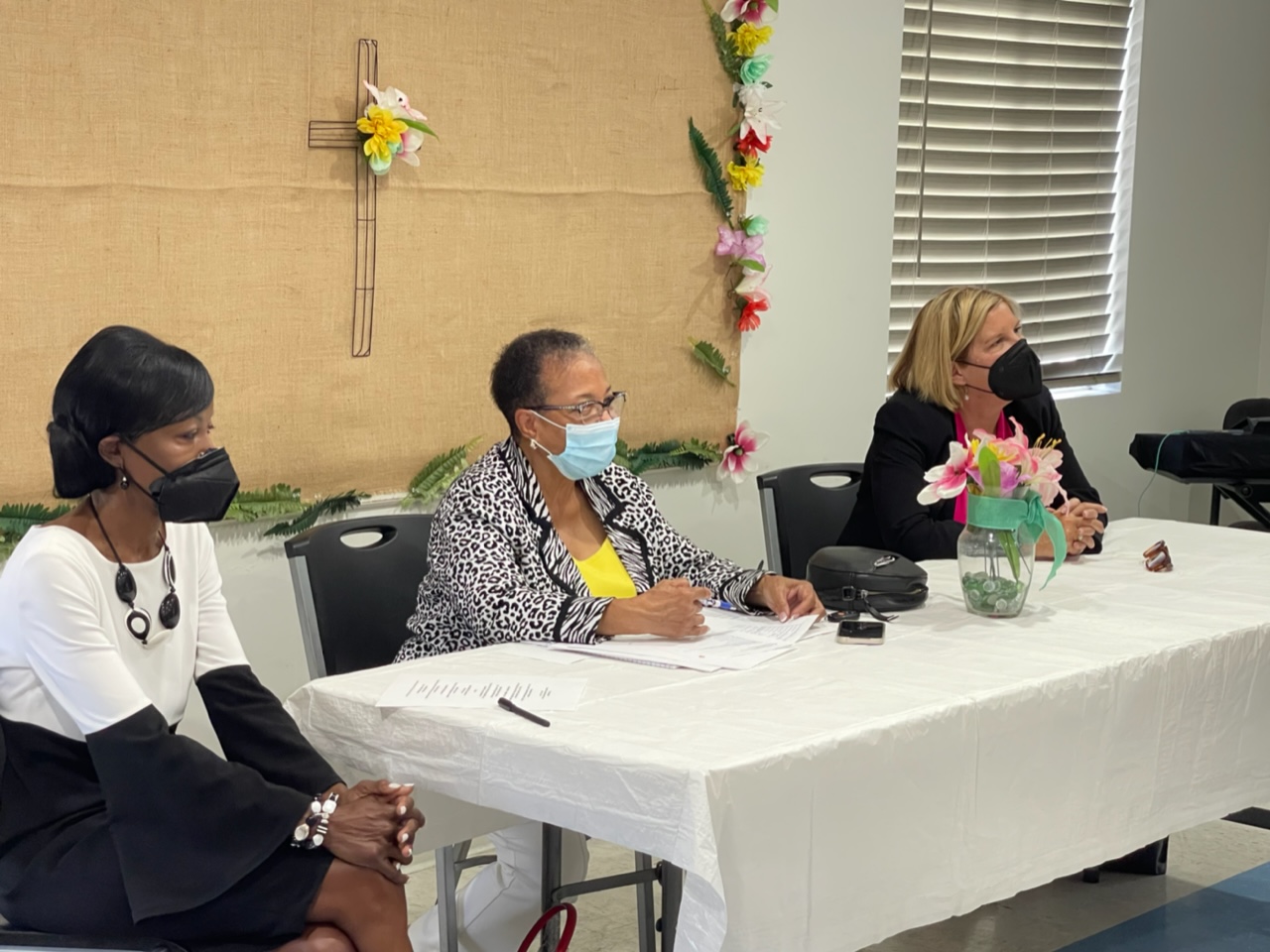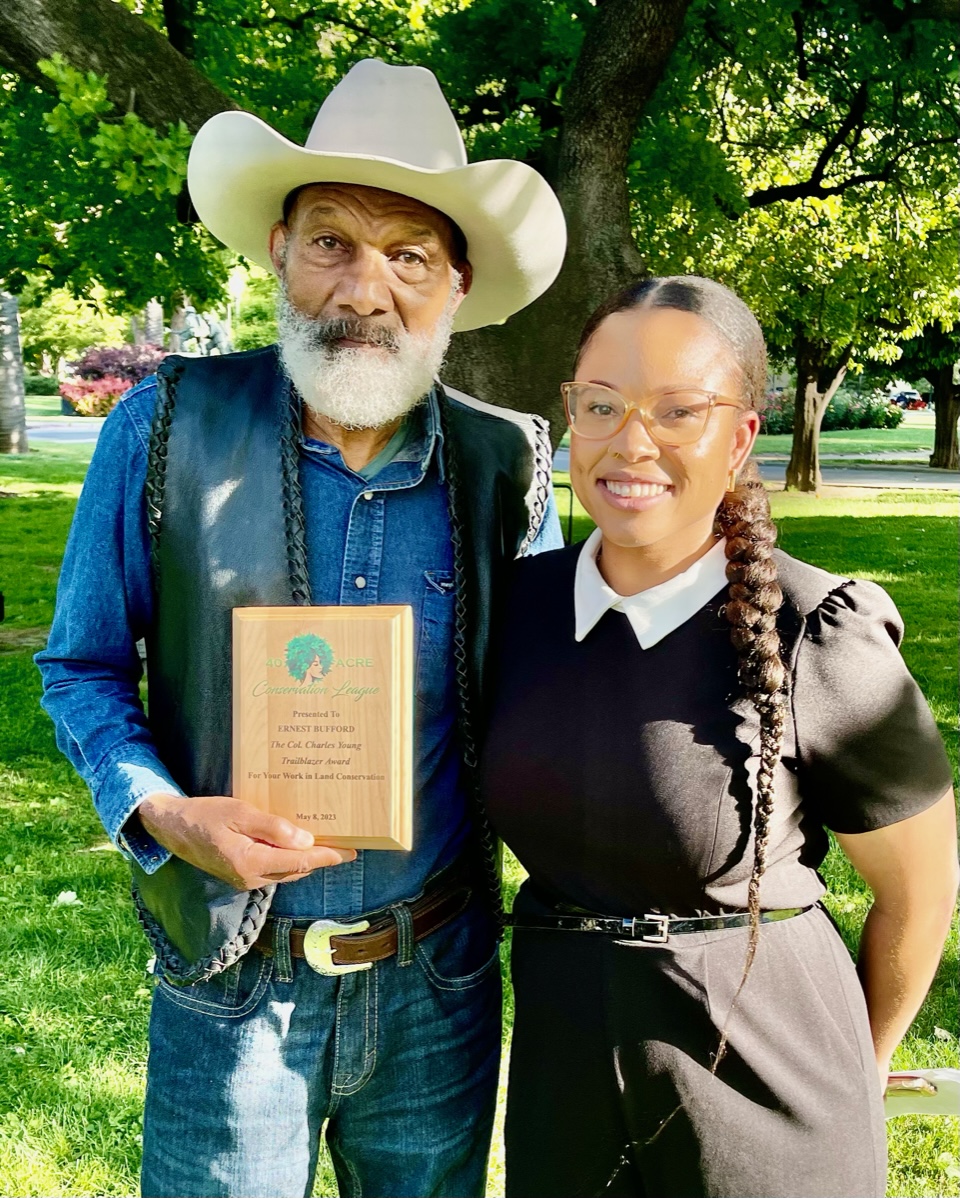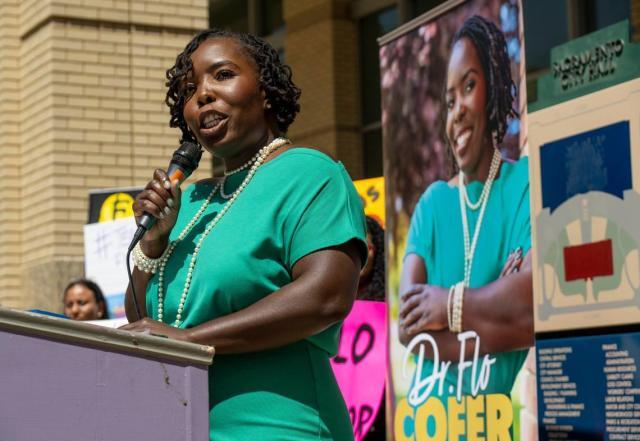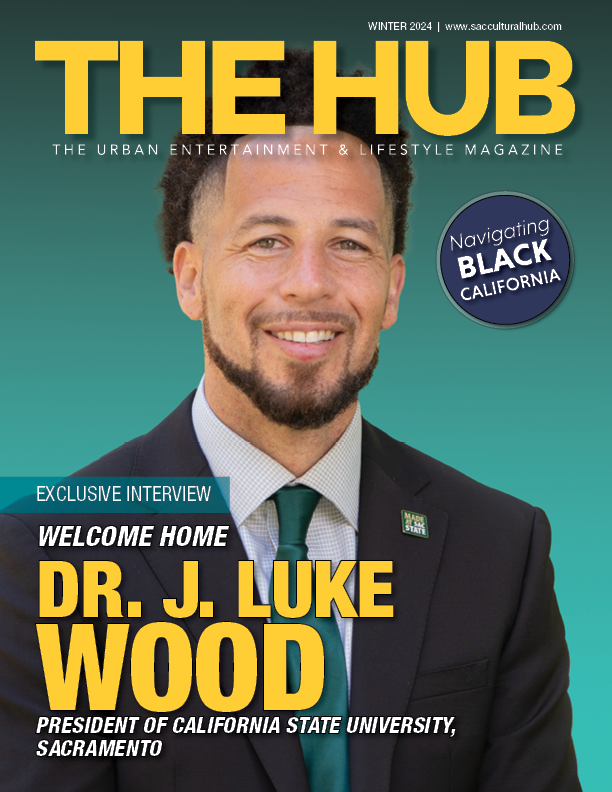
Aldon Thomas Stiles | California Black Media
CBM Staff Sharon Nevins, director of San Bernardino County’s Department of Aging and Adult Services Cheryl Brown and CDA Director Susan DeMarois talk to a group of community members.
Community members listen and ask questions from government officials.
The California Department of Aging: There Is Help for Elder Californians
The Saint Paul African Methodist Episcopal Church’s Commission on Social Action held a community meeting on aging last Thursday in San Bernardino with representatives from the California Department of Aging (CDA) and the Bernardino County’s Department of Aging and Adult Services.
Held in the sanctuary, the discussion featured state representatives and Social Action commission members led by former Assemblymember and Commission Chair Cheryl Brown, who represented the 47th Assembly District in San Bernardino County from 2012 to 2016.
Brown spoke with community members and leaders from San Bernardino and Riverside counties about programs and resources available for elderly Californians and the caregivers who look after them.
“The state has set aside millions of dollars to help older Californians have a better quality of life through the master plan on aging. And caregiving is 4th of the 5 goals established in the state’s Master Plan for Aging,” Brown told California Black Media.
CDA Director Susan DeMarois also attended the meeting.
CDA administers programs that serve older adults, adults with disabilities, family caregivers, and residents in long-term care facilities throughout the State. It has a $450 million dollar budget and according
to its Strategic Plan, CDA’s first objective is to advance Gov. Gavin Newsom’s California’s Master Plan for Aging.
Newsom’s “Master Plan for Aging” was introduced as an executive order in the summer of 2019. Conceptualized as a five-point plan, its framework encompasses housing, health, equity, care giving “that works” and affording aging.
According to DeMarois each point of the governor’s master plan has its own budget and will be implemented over the next 8 years.
During the meeting — titled “Lunch, Listen and Learn” — community members expressed their concerns and suggestions specifically regarding to taking care of elderly Black people in the Inland Empire. A major theme of the discussion was ensuring familiar (traditional) modes and channels of communications were being employed to reach Black elders.
Sharon Nevins, director of San Bernardino County’s Department of Aging and Adult Services, spoke about ways in which the county has been involved in addressing those concerns.
“We have staff out there in the community, putting information in hands,” said Nevins.
Nevins emphasized the significance of Black churches and their unique influence on Black elders in California.
“We definitely reach out to the churches. We’ve always done that,” Sharon Nevins
DeMarois hailed San Bernardino as a model for the rest of the state because the city has been “meeting the needs of the whole person.”
According to the Center for Disease Control (CDC), California was tied with Hawaii in 2019 for the states with the nation’s highest life expectancy at an average of about 81 years.
Riverside County has a life expectancy of 80.3 years and San Bernardino county has a lower expectancy at 78.8 years.
Part of the statewide plan for addressing the Black elder community is to partner with ethnic media organizations to spread the word about the resources that are available to Californians in the advanced phase of their aging process.
DeMarois, much like Nevins, acknowledged that a large portion of the state’s plan to reach Black elders is through local churches.
“It’s multi-pronged,” said DeMarois. “We know in the Black community faith is a proven path.”
One of the organizations mentioned during the community meeting – an organization that DeMarois claims she took note of – is the Inland Empire Pastor’s Association.
DeMarois expressed the need for the state and local agencies to implement “coordinated strategies” to approach challenges facing the state’s aging population.





